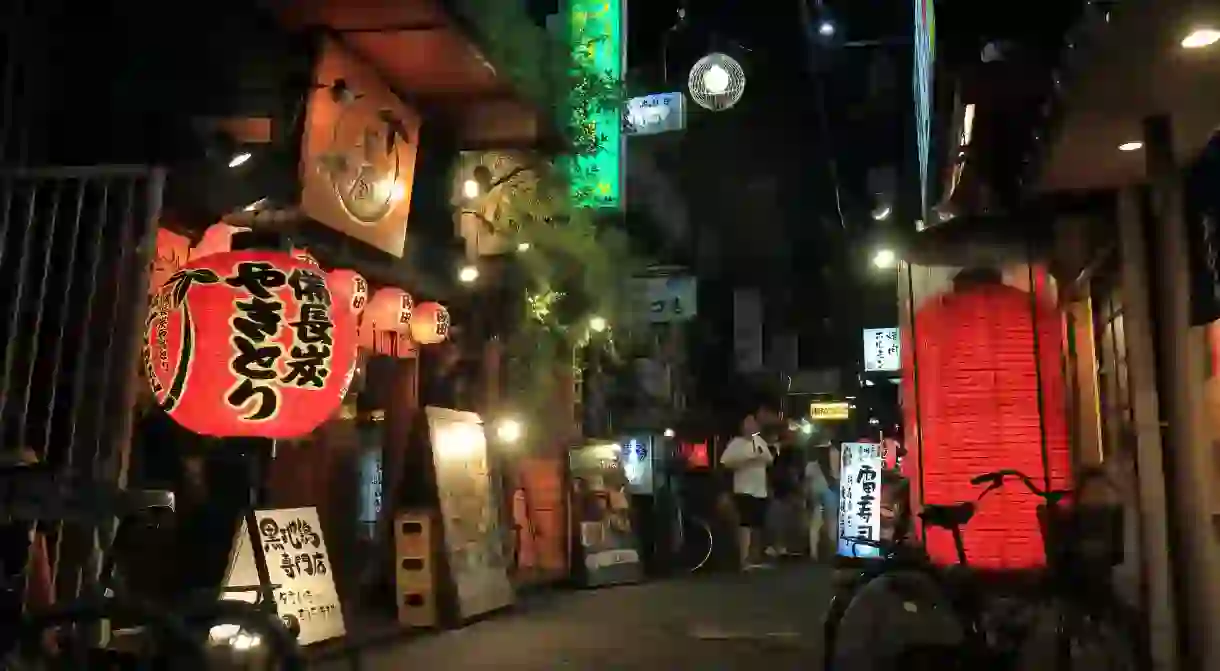The Best 24-Hour Restaurants in Osaka

Fan of midnight snacks? Stayed out all night and now you’re starving? You’re in luck because Osaka is the Japanese city that never sleeps. Sure you could hit up McDonalds, but you’re on vacation! Make the most of your trip by grabbing a bite at one of these great 24-hour restaurants unique to Japan and Osaka.
Hanamaruken Namba Hozenji for ramen and slow-cooked pork
Restaurant, Japanese
Nestled in Namba’s secluded and atmospheric Hozenji area, a hidden collection of alleyways known for cobbled streets and an ancient shrine, Hanamaruken is worth finding. Though it specialises in ramen, it’s the gyoza people tend to rave about. These morsels are grilled to crispy perfection and are the ideal accompaniment to the signature dish – a salty bowl of ramen topped with melt-in-your-mouth slow-cooked pork. There is usually a wait, even in the middle of the night, but it rarely takes more than 10-15 minutes to get a seat.
Chinese Cafe 8 Shinsaibashi for the best Peking duck in Osaka
Restaurant, Chinese

Chinese Cafe 8 may not serve the local cuisine, and you’re more likely to hear Chinese than Japanese spoken at the crowded tables, but the vibe is as weird and quirky as the city that surrounds it. The massive space is decked out with brightly coloured paints and lights, and giant golden statues of the Buddha. And the walls and ceiling are covered in larger-than-life likenesses of… human genitalia. Seriously, don’t bring your children here unless you don’t mind answering awkward questions. Not to mention the food is phenomenal. Located in Dotonbori just off the area’s namesake canal, this towering restaurant is difficult to miss… in more ways than one.
Ramen Zundoya Shinsaibashi for customisable bowls of ramen
Restaurant, Japanese

Zundoya is a staple of the all-night party scene. Few foods satisfy as much as ramen does after a night of boozing – though Zundoya’s bowls are good enough to be enjoyed any time of day and in any mental state. The ramen is rich and salty and comes in two main varieties: regular or spicy (though other options are available as well). Guests choose the hardness of the noodles, amount of oil in the broth and toppings. There is often a wait, even (especially) in the wee hours of the morning, but the turnaround is generally quick and it’s more than worth it.
Ichiran Ramen to enjoy your midnight meal in a private booth
Restaurant, Ramen

Kinryu Ramen for dining on tatami mats
Restaurant, Japanese

Yakiniku Nikuhachi Dotonbori for all-you-can-eat grilled meat and veg
Restaurant, Japanese
Isomaru Suisan Umeda for typical late night Japanese pub food
Restaurant, Japanese
This izakaya serves an assorted selection of Japanese foods and drinks at all hours of the day and night. It’s a typical Japanese pub in many ways: the menu is diverse, ranging from shellfish to rice bowls, edamame to okonomiyaki (Japanese pancake); food is served in small, sharable portions, and smoking is allowed, filling the space with an aroma other than barbecue and booze. What makes Isomaru Suisan stand out, besides the generous hours, is the variety of fresh seafood options, including kani-miso (miso-grilled crab), sushi and sashimi. Isomaru Suisan has other Osaka locations, including in Dotonbori and Sennichimae.
Yoshinoya (Kyobashi) for gigantic bowls of grilled beef and onions on rice
Restaurant, Japanese
Don’t dismiss this Japanese fast food chain (especially if you’ve been disappointed by one of their bland locations abroad) because it’s more than worth the try. Yoshinoya specialises in gyudon, a bowl of grilled beef and onions served over rice. Pickled ginger, raw eggs, and other toppings are available for added flavour, but the already-overflowing bowl packs a punch with or without them. Giant bowls are available for the equivalent of a few bucks, perfect for hungry stomachs. Many locations are open 24 hours.













